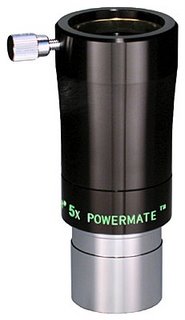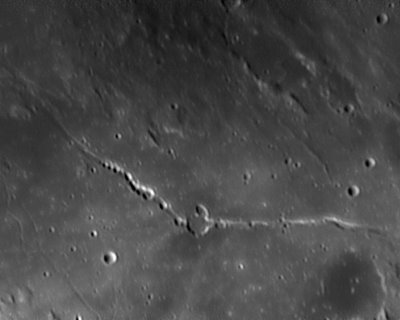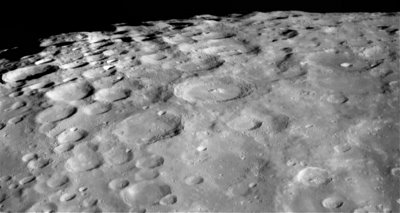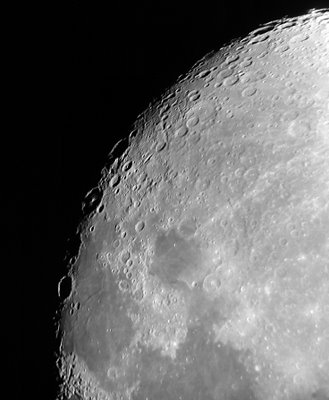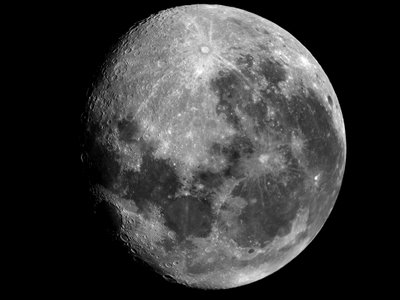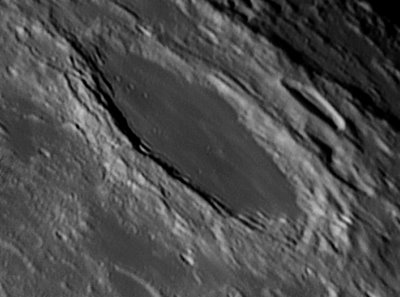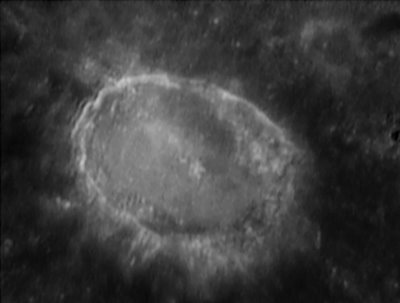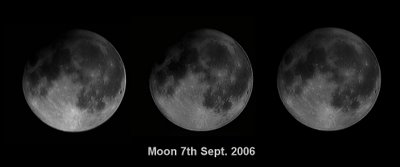 Atlas is a prominent lunar impact crater that is located in the northeast part of the Moon, to the southeast of Mare Frigoris. Just to the west is the slightly smaller but still prominent Hercules crater. Northeast of Atlas is the large Endymion crater.
Atlas is a prominent lunar impact crater that is located in the northeast part of the Moon, to the southeast of Mare Frigoris. Just to the west is the slightly smaller but still prominent Hercules crater. Northeast of Atlas is the large Endymion crater.The inner wall of the Atlas crater multiply terraced and the edge slumped, forming a sharp-edged lip. This is a floor-fractured crater with a rough and hilly interior that has a lighter albedo than the surroundings. Floor-fractures are usually created as a result of volcanic modifications.
There are two dark patches along the inner edge of the walls; one along the north edge and another besides the southeast edges. A system of slender clefts named the Rimae Atlas crosses the crater floor, and were created by volcanism. Along the north and northeastern inner sides are a handful of dark-halo craters, most likely formed due to eruptions. Around the mid-point is a cluster of low central hills arranged in a circular formation.
Hercules is a prominent crater located in the northwest part of the Moon, to the east of Atlas crater. It lies along the east edge of a southward extension in the Mare Frigoris. To the west across the mare is the Bürg crater. To the south is the ruined crater Williams.
The interior walls of Hercules have multiple terraces, and there is a small outer rampart. The crater floor has been flooded by lava in the past, and contains several areas of low albedo. The central peak has been buried, leaving only a low hill near the mid-point. The satellite crater 'Hercules G' crater is located prominently just to the south of the center. The small crater 'Hercules E' lies along the southern rim of Hercules.
In the past this crater has been reported as the site of some transient lunar phenomenon.
Wikipedia


